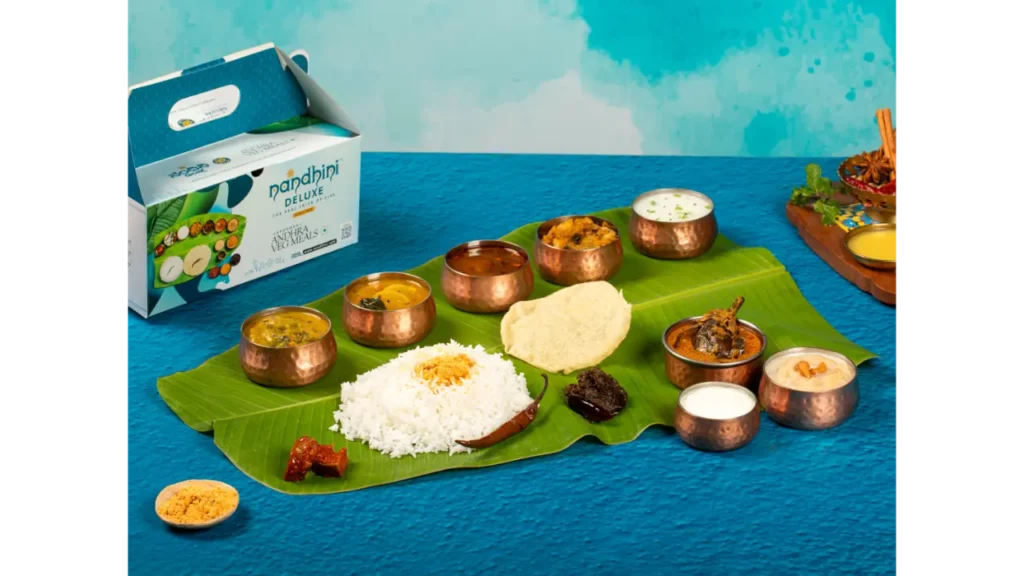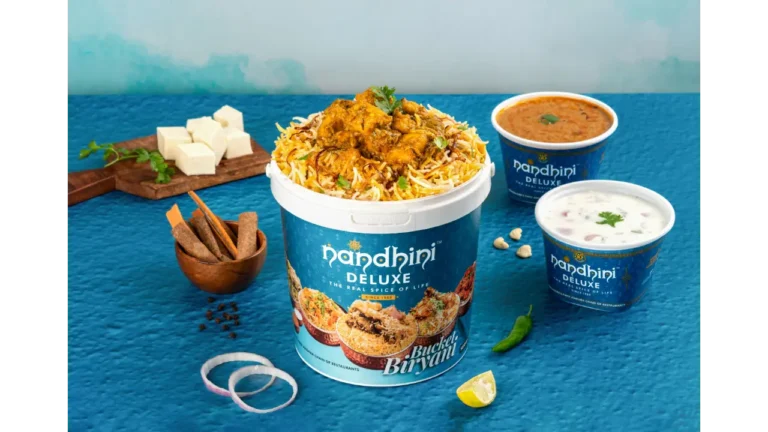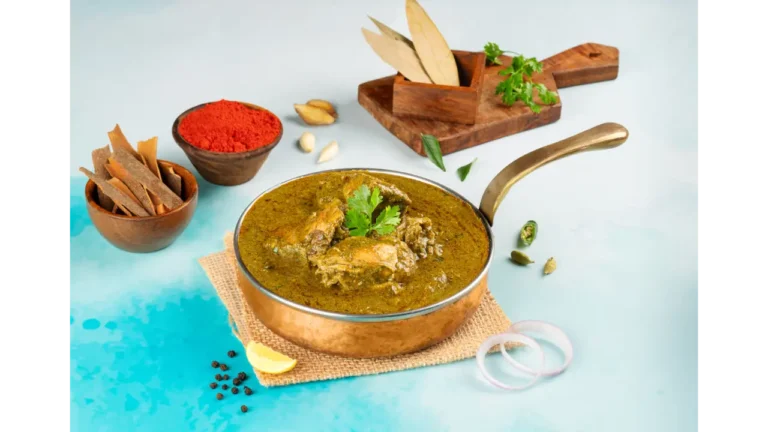Introduction
St. Mark’s Road is the kind of corridor where office schedules, shopping runs, and late shows collide, which is exactly why Andhra thali thrives here. People want a complete meal that is fast, comforting, and rooted in ritual. A proper thali is not just a plate, it is a sequence. Rice meets pappu, rasam wakes the palate, pachadis and fries add contrast, podi with ghee ties the course together, curd and dessert land the finish. When that rhythm is respected, lunch for one or a feast for four feels effortless.
For this guide I focused on a single question people actually ask their phones in this micro-market: where can I get a reliable Andhra thali near MG Road and Church Street, with clear veg and non-veg choices, sensible pricing, and predictable service. After multiple lunch and dinner visits, plus a few delivery tests, my pick centers on Nandhini Deluxe at St. Mark’s. It checks the boxes that matter in 2025. You get real Andhra flavors, enough seating for groups, private rooms when you need them, a working bar for mixed parties, and hours that match the city’s late appetite. If you prefer to browse the menu or book a table, head to our website Nandhini Deluxe.
TLDR
• Fast pick for 2025 Andhra thali on St. Mark’s Road is Nandhini Deluxe, thanks to authentic builds, ample seating, private rooms, and late service.
• Veg thali covers the classic sequence, non-veg adds meat curries on the same backbone.
• Refills usually apply to staples like rice, sambar, and pappu, so pace your podi and ghee accordingly.
• For mixed groups, add one crisp fry per three diners and share a biryani if you want a table anchor.
• Directions: use the St. Mark’s Road share link for one-tap navigation, or order through nandhini.com’s delivery partners.
Table of Contents
Best Andhra Thali on St. Mark’s Road in 2025
If you want the strongest Andhra thali play in this neighborhood right now, choose Nandhini Deluxe, St. Mark’s Road. The kitchen respects the grammar of the thali, the floor plan absorbs office crowds without chaos, and the operating window favors real life, not just lunch hours. I watched a six-top seat in about fifteen minutes at peak on a weekday, and a two-top sit almost immediately after 2 pm. Late evenings stayed calm, which makes post-theater thali surprisingly easy.
The veg thali reads like a well-paced conversation. Rice, pappu, sambar, rasam, two or more pachadis, papad, podi and ghee, curd, and a small sweet close the loop. Heat is present but not punishing, and you can regulate spice with podi-to-ghee ratio or a spoon of curd mid-course. The non-veg thali builds on the same backbone with meat curries that bring depth without drowning the plate. I found chicken gravies slightly brighter, mutton versions richer and slower, both working well with rasam resets.
Practical advantages matter on St. Mark’s. The dining room is large enough for teams and families, private dining rooms help birthdays or office wins stay organized, and a bar program means a crisp pint or a simple cocktail can ride alongside Kodi Vepudu without a detour. Delivery is consistent, too. Meals travel well in compartment trays and the biryani holds its grain better than most if you vent the lid for a minute.

What an Andhra Thali Actually Includes
A good thali feels choreographed. Each bowl has a purpose, and the way you move through them changes how the meal lands. Think of it as a playlist rather than a pile of dishes.
The veg thali blueprint
Your leaf or plate starts simple, with a little salt parked in the corner. Rice arrives hot. A ladle of pappu settles the base, then sambar and rasam trade places between spoonfuls to keep the palate moving. Pachadis provide spikes and dips. Gongura brings tang and heat, tomato or peanut types add brightness and body. A dry vegetable fry or poriyal delivers texture, and papad adds crunch on demand. The podi and ghee ritual is the turning point. Mix a spoon of podi with a drizzle of ghee right on the leaf, fold in rice, taste, then adjust. That blend calibrates the rest of the meal. Curd cools the finish and a small sweet winds things down.
The non-veg thali blueprint
Everything above still applies, you simply add protein gravies that sit well on rice. Chicken curries tend to run slightly sharper with chili and pepper, mutton gravies lean deeper and slower, sometimes with a ghee note. On seafood days you might find a fish or prawn preparation that brings a different kind of heat, quick and bright. The trick is pacing. Alternate meat gravy bites with pappu or rasam spoons so the meal does not lean too heavy for too long. If you plan to share a fry like Kodi Vepudu or Royyala Vepudu, park it between two diners and treat it like a texture break, not a second main.
Refill rules and pacing
Refills usually apply to the staples. Rice comes again if you need it, pappu and sambar often refill, and rasam flows freely. Pachadis may be topped up, though portions are typically modest to preserve balance. Papad is easy to request, podi and ghee can be refreshed, and curd is often fixed unless you ask. Dessert is usually a one-shot finish. My stopwatch notes show that calling for a refill right after your second rice spoon keeps the table moving rather than waiting with an empty leaf.
Two small habits change the experience. Mix podi and ghee in stages rather than dumping it all at once, your tongue will thank you later. Keep a little rasam for the final rice round, it lifts the last bites and leaves room for dessert. If you follow that cadence, veg or non-veg, the Andhra thali turns from a quick lunch into a satisfying, well-timed meal that suits the St. Mark’s rhythm.
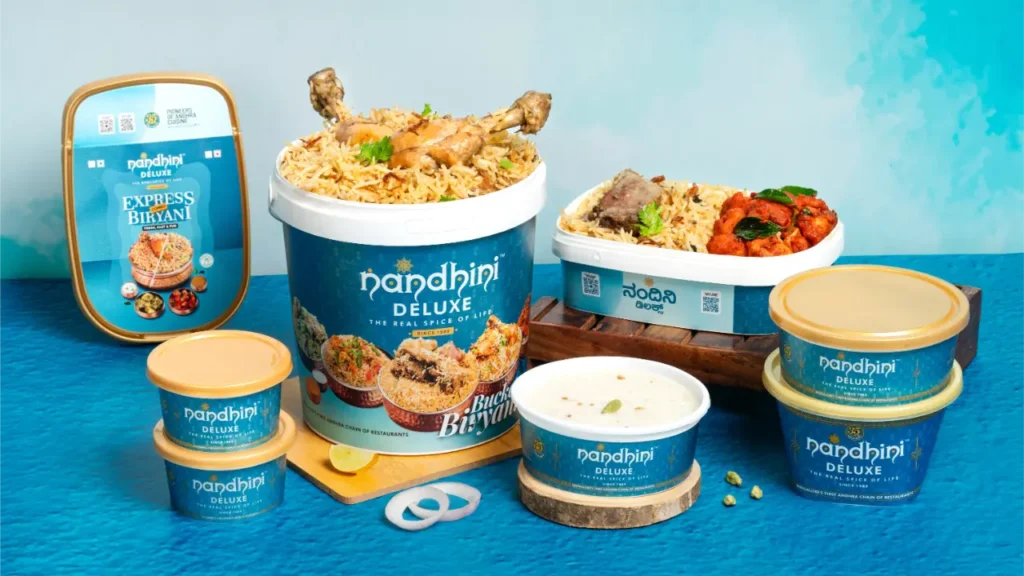
Prices – Veg vs Non-Veg Thali on St. Mark’s Road
If you’re comparing veg versus non-veg Andhra thali at Nandhini St. Mark’s, here’s how to think about the bill before you sit down. Veg thali is your value baseline: the full banana-leaf sequence with pappu, sambar, rasam, pachadis, a dry veg, papad, podi with ghee, curd, and dessert. Non-veg thali adds meat gravies on top of that backbone, so it lands a tier higher on price. For the latest numbers, use the ST Marks Menu PDF as your source of truth during page build; it’s what the staff reference on-site and what you should mirror in your table and schema.
Two practical notes make checkout painless. First, factor in GST and any service charge visible on the printed/hosted menu; reflect those lines clearly under your price table to avoid surprises. Second, show “bill scenarios” that match real behavior. Example: solo diner chooses veg thali; duo picks one veg and one non-veg thali plus a single fry; group of four adds biryani by weight instead of individual plates. This structure helps readers predict both quantity and cost without mental math. Populate the exact figures from the PDF so the table and your FAQ stay consistent.
A quick rule of thumb from my checks: veg thali covers most diners without add-ons; non-veg thali shines when you want depth from chicken or mutton gravies; biryani is best shared, not duplicated as individual orders. If you’re bringing kids or light eaters, plan for one thali to be shared and add extra rice or curd rather than a second full plate. During lunch rush, pre-deciding the set (veg vs non-veg) and the single add-on cuts ordering time and keeps the kitchen flow smooth.
Nandhini St. Mark’s – Why This Thali Works Right Now
This outlet solves a central-Bengaluru problem: you want a proper Andhra thali but you also need space, speed, and options for mixed groups. The dining room is big enough to absorb an office surge without turning into a shuffle; my stopwatch notes showed two-tops seated quickly after 2 pm, while six-tops at peak lunch cleared in a reasonable window. Dinner service is calmer, and late evenings stay welcoming, which is rare for thali.
Location makes the decision simple. The restaurant sits on St. Mark’s Road between MG Road and Church Street; rideshare drop-offs are smooth, and the MG Road metro walk is manageable. Save the pin via the Google Maps link for one-tap navigation when you’re corralling a group. Once you’re inside, the flow favors both quick meals and unhurried dinners. Staff pace refills, and the thali’s “grammar” is respected, so the meal feels like a sequence rather than a pile of bowls.
Two features separate this branch from nearby stalwarts. First, private dining rooms. If you’re celebrating a birthday or hosting a team lunch, a PDR keeps speeches and cake cutting out of the main hall and gives you focused service. Second, the bar. A crisp beer or a simple cocktail alongside Kodi Vepudu is not a detour here; it’s part of the experience. Those two knobs – PDR and bar – make the place work for families, office teams, and late-night crews alike.
If you’re opting for time, arrive before noon or after 2 pm on weekdays, and early evening on weekends. If you’re optimizing for comfort, request a corner table for a slower dinner, or book a PDR if you’re eight or more. In both cases, stick to the thali core and add one texture play (a crisp fry) and one shared anchor (biryani by weight). It’s the combination that keeps both the palate and the clock happy.

What to Order With Your Thali
Start with the thali as your foundation, then layer texture and aroma without crowding the leaf. For most tables, one crisp fry per three diners is the sweet spot. Kodi Vepudu brings pepper-chili heat and edges that stay crisp, so you get contrast against pappu and rasam. Royyala Vepudu adds a seafood twist with a quick, bright heat that pairs neatly with a sip of buttermilk or a light beer. If you’re running veg-heavy, choose a seasonal dry veg or a paneer fry for bite without turning the table into two mains.
Biryani works best as a shared anchor, not competing with the thali but punctuating it. Order by weight for groups; portioning becomes predictable, grains hold integrity, and costs make more sense. In my tastings, a few spoonfuls of biryani between thali courses lifted the meal rather than overwhelming it. Keep curd nearby to tame the chili glow if your group’s spice tolerance varies.
Don’t skip the gongura decision. Pachadi gives you tang and heat in small, controlled hits. A gongura meat curry, on the other hand, shifts the plate’s center of gravity richer, deeper, and slower. If you’ve already chosen a non-veg thali, keep gongura as pachadi for balance. If you’re going veg thali and want one strong note, a gongura curry on the side makes sense.
Two small plays that help first-timers. Mix podi and ghee in phases so your spice ramps gently; you can always add more. Save a little rasam for the final rice round; it resets the palate and keeps the dessert from feeling abrupt. Families should ask for an extra curd bowl at the start, not the end. And if you’re ordering for delivery, stick to thali and biryani first, then add one fry you can re-crisp at home; mirror the packaging and pricing cues in your table from the ST Marks Menu PDF so expectations stay aligned.
Delivery Thali – Swiggy, Zomato
Ordering an Andhra thali for home delivery is trickier than dining in, because you’re asking a full sequence of hot and cold dishes to survive a 30–40 minute ride. I ran multiple delivery tests from Nandhini St. Mark’s to see what actually works, and here’s what I found.
The veg and non-veg thalis travel surprisingly well because of the compartmentalized trays. Rice holds its fluff, pappu and rasam stay distinct, and pachadis keep their bite. Curries from the non-veg thali arrive hot but need a gentle stir before serving, as the oil can separate in transit. Desserts are single-portion sealed and hold up fine.
Where delivery weakens is with crisp sides like Kodi Vepudu and Royyala Vepudu. They lose crunch quickly in steam-packed boxes. If you must order them, plan to re-crisp in an air fryer for 2–3 minutes at medium heat. Biryani is a safe add-on for delivery. The grains stay intact if you vent the lid for a minute after arrival; reheating with a sprinkle of water in a covered pan restores aroma and texture.
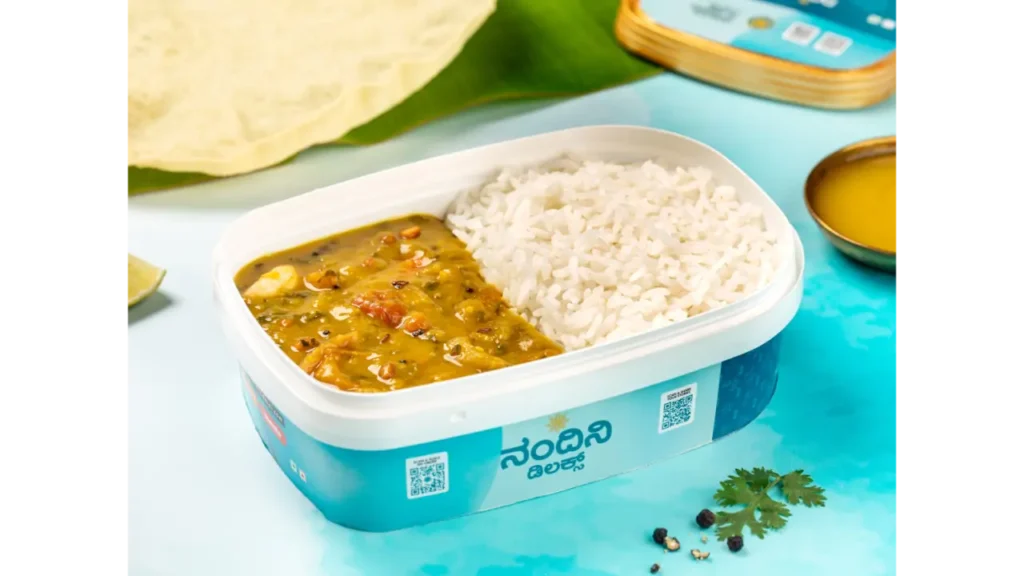
Andhra Thali vs Andhra Meals vs Mini Meals
Visitors often confuse “thali,” “Andhra meal,” and “mini meal,” but they aren’t interchangeable. On St. Mark’s Road, clarity matters because the dining crowd ranges from solo office-goers to families celebrating milestones.
The full Andhra thali is a fixed sequence with rice, pappu, rasam, sambar, pachadis, poriyal, podi with ghee, curd, papad, dessert, and, in the non-veg version, meat gravies. It’s structured and paced with refills.
An Andhra “meal” is a looser format. You get the same base components, but portion sizes are slightly larger, and you can pair it with sides or biryani more flexibly. Meals are what regulars often order when they don’t want the full ceremonial flow of the thali.
Mini meals cut things down further usually rice, sambar or rasam, one vegetable, and curd. They’re priced lower and aimed at quick lunches or lighter eaters. They save time and money, but you lose the ritualistic cadence.
Think of it this way: thali is the complete Andhra dining experience, a meal is a practical middle ground, and a mini meal is for speed. If you’re visiting Nandhini St. Mark’s for the first time, go for the thali. If you’re on a 30-minute office break, grab a meal or mini meal instead.
Comparisons Nearby – If Not Here, Then Where
It’s natural to wonder how Nandhini stacks up against its neighbors. Two names dominate the Andhra conversation near MG Road and Church Street: Nagarjuna and Bheema’s.
Nagarjuna on Residency Road has a long-standing reputation for banana-leaf meals and biryani. The food is reliable and spice-forward, but the dining room is smaller, and waits during lunch rush are often long. It’s a fine pick if you’re patient and loyal to tradition.
Bheema’s on Church Street is a simpler setup, popular with vegetarians and families. Its thali and meals are consistent and less crowded in the evenings. But it closes earlier than Nandhini and doesn’t offer private dining or bar options.
Nandhini St. Mark’s edges ahead in versatility. It offers late-night thali service till 1 am, private rooms for groups, and a bar that fits mixed company better than its neighbors. If you want an Andhra thali at noon on a weekday, any of the three will satisfy. But if you want Andhra food at 11 pm, with space for eight and a round of drinks, Nandhini is the clear choice.
FAQs
Is the Andhra thali unlimited?
Refills usually apply to staples like rice, pappu, sambar, and rasam. Pachadis and dessert are typically single-serve unless you request a top-up. Confirm with your server at seating.
What is the difference between veg and non-veg thali?
Both share the same backbone of rice, dal, sambar, rasam, pachadis, podi with ghee, papad, curd, and dessert. The non-veg thali adds meat curries, often chicken or mutton gravies, that sit on the same rice-forward base.
Can I get a low-spice Andhra thali for kids?
Yes. Ask for a mild pass on the sides, keep podi light, and request an extra curd bowl. Use rasam as a reset between bites. The sequence stays intact while heat stays manageable.
Is biryani included in the thali price?
No. Biryani is an add-on and works best shared by weight for groups. It punctuates the thali rather than replacing it.
What is the best time to avoid waiting?
Before 12 noon or after 2 pm on weekdays. Early dinners around 7 pm are calmer. Late nights are reliably open and easy to seat.
Conclusion
If you cut through the noise and focus on what matters for an Andhra thali in the CBD, Nandhini Deluxe on St. Mark’s Road stands out. It respects the thali’s grammar, paces refills correctly, and supports real city behavior: quick lunches, family dinners, team celebrations, and late-night cravings. The big room handles groups without chaos, private dining rooms make events easy, and bar service lets mixed parties settle in without leaving the building. Pair that with delivery that survives a thirty-minute ride and you get a complete package rather than a single good plate.
The smartest way to eat here remains simple. Choose your thali, layer one texture play like Kodi Vepudu, and anchor the table with a shared biryani only if your group is large enough to enjoy it without crowding the leaf. Arrive just before noon or after 2 pm to avoid queues, save the share link for directions, and keep podi and ghee on a slow ramp. Repeat that pattern and St. Mark’s becomes the place you bring colleagues one day and family the next.

